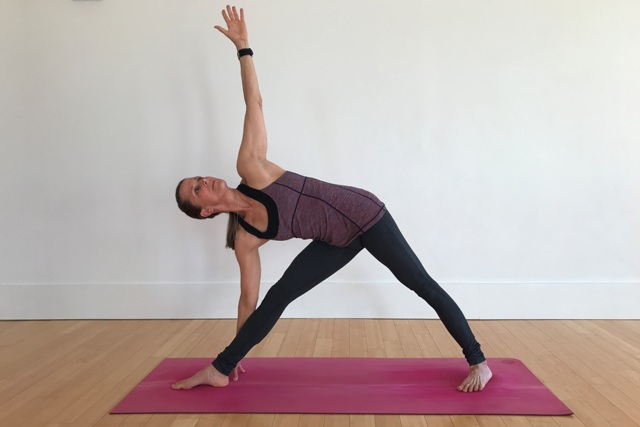Parivrtta Parsva Konasana or Revolved Side Angle Pose is a deep twist. Even though it looks like Side Angle it is more related to Warrior I because of the orientation of the hips.
I love starting with Reclined-Hand-to-Big-Toe-Pose, leg straight up, out to the side and over into a twist, as a warm up for Revolved Side Angle Pose.
Supta Padangusthasana or Hand to Big Toes Pose
Then come the standing poses: Warrior II, Triangle and then Side Angle Pose. This gives you the basic engagement and stretches in the legs, torso and arms to prepare you for the twist.
Come into Warrior I to work the hips square to the front leg.
I also like a basic lunge twist to prepare for Revolved Side Angle. In this preparatory twist, the bottom arm stays on the inside of the front leg instead of crossing over to the outside. This makes it easier to twist and it gives the spine a preview of what is to come.
Next, I like to practice the open twists and work my way into the more restricted twists like Parivrtta Parsva Konasana. It is easier to twist when the legs are perpendicular to each other as they are in Revolved Half Moon. In Revolved Triangle the front leg is angled closer to the body making it a little more challenging to twist. Finally, with the front leg bent 90 degrees and the torso lying over the front thigh, Revolved Side Angle Pose is the most restricted twisting standing pose.










